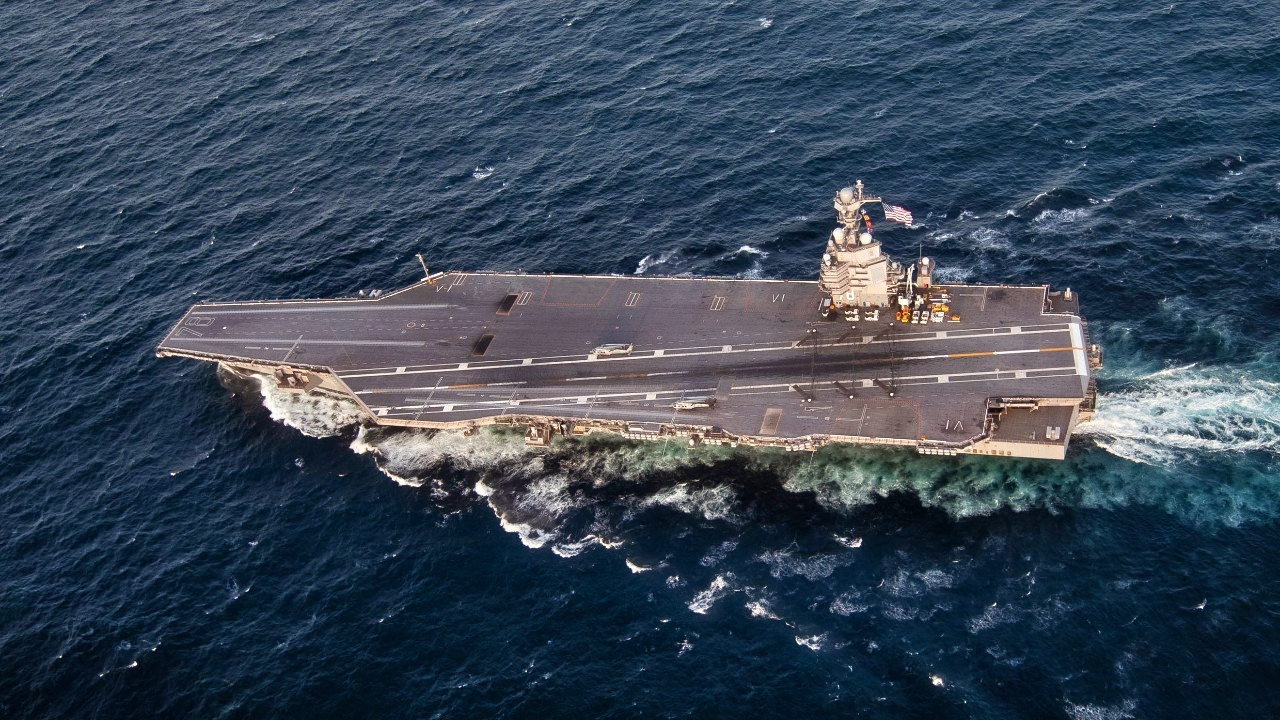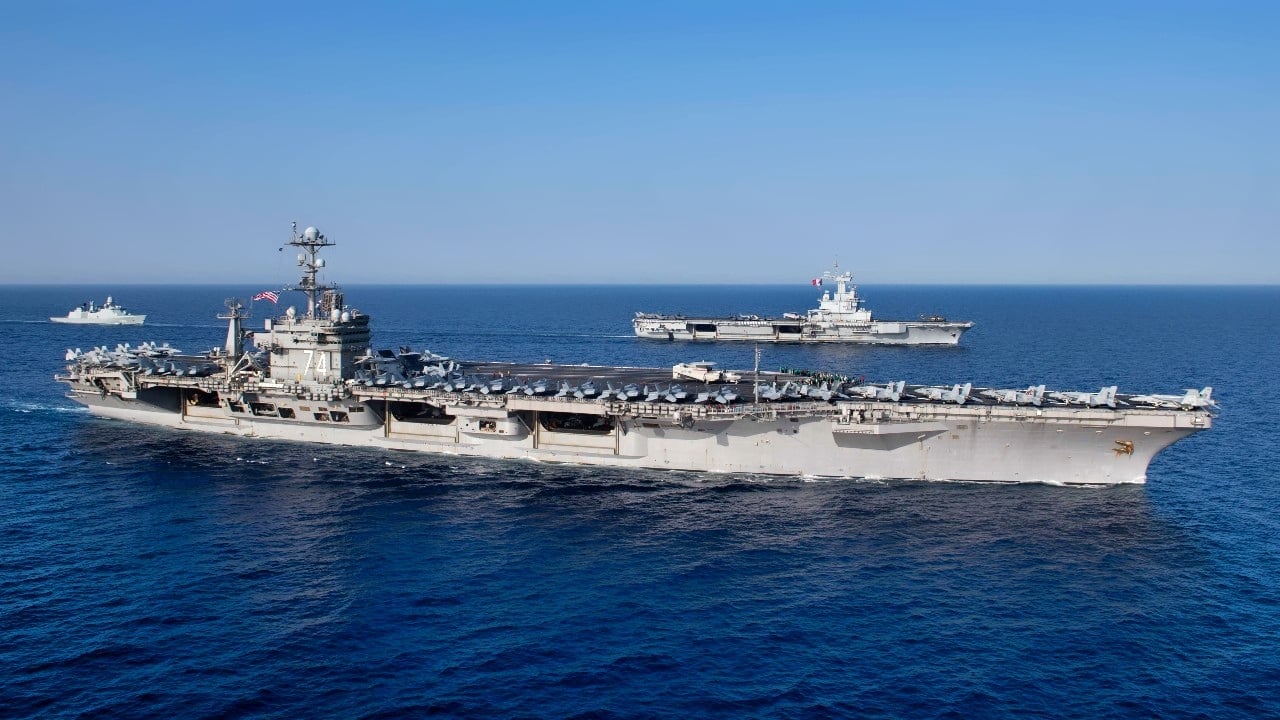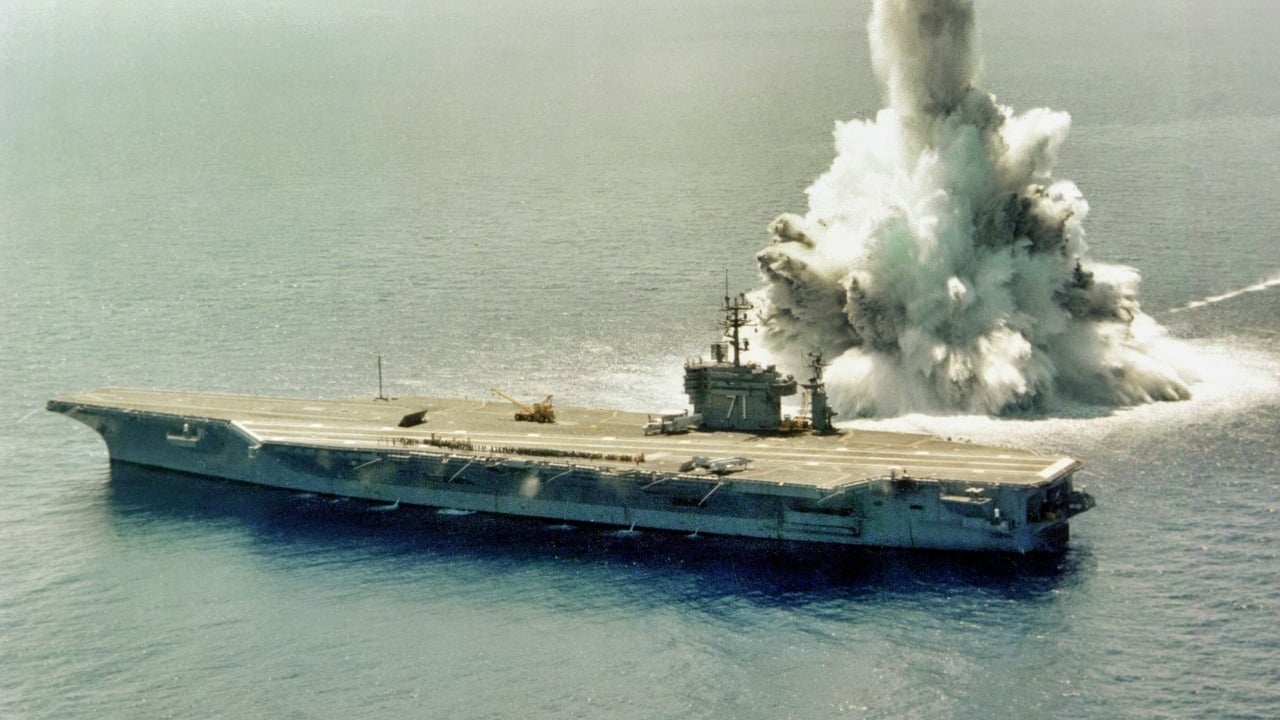China Has Made it Clear: It Could Sink a U.S. Navy Aircraft Carrier
The United States and China are on a potential collision course, with U.S. military strategy heavily reliant on aircraft carriers as a central force in the Indo-Pacific.
What You Need to Know: The United States and China are on a potential collision course, with U.S. military strategy heavily reliant on aircraft carriers as a central force in the Indo-Pacific.'

-China is aware of this reliance and has developed advanced missile and hypersonic weapon systems specifically designed to target and neutralize these carriers, turning a traditional U.S. strength into a vulnerability.
-The article argues that the U.S. must urgently rethink its defense strategy by investing more in submarine capabilities and countermeasures against China's missile threats.
-Additionally, it suggests shifting focus to preparing Taiwan for potential long-term insurgency rather than conventional warfare. Time is running out for the U.S. to adapt to the evolving military landscape.
Rethinking U.S. Naval Strategy: The Urgent Need to Counter China's Missile Threat
The United States and the People’s Republic of China (PRC) seem destined for war. Unless a major diplomatic offramp is taken—soon—the conflict will become a fait accompli.
Currently, the US military’s best strategy for fighting China’s military resides in the hands of three branches that would operate seamlessly together: the US Navy, the US Marine Corps, and the US Air Force. These three branches would be the proverbial tip of the spear in any conflict with China.
Specifically, the US Navy’s aircraft carriers would be the most likely forward deployed assets that would be charged with breaking whatever Chinese forces were being arrayed against the US military.
The only problem facing the United States is that the Chinese military is aware of America’s preference—obsession, really—with big, beautiful aircraft carriers and they have tailored their strategy for specifically denying America’s use of aircraft carriers in any potential conflict with China.
For the US military in the Indo-Pacific, the aircraft carrier is center of gravity. For the Chinese military, at least for now, the center of gravity is their massive, growing missile (and hypersonic weapons) arsenal that is primed for holding US aircraft carriers hostage.
The US Navy Highlights Its Vulnerabilities for China
Oddly, US military planners have known these Chinese strategies for over a decade. Yet, they insist on predicating their strategies on a system, aircraft carriers, that the Chinese can overcome. Should even a single US aircraft carrier be lost in conflict with China, it would create such a large gap in America’s defense capabilities that it would likely force the United States to pullback its other forces.
For its part, Beijing would not hesitate to sink one of America’s aircraft carriers because Chinese leaders understand the potency of the psychological effect that losing one of America’s most prestigious weapons platforms would have on the American people.

What’s more, because the US military is dependent on flat tops for power projection in the Indo-Pacific, the loss of even one carrier would have the intended effect of throwing the US military in the region into disarray—and would likely force Washington to stay its hand as Chinese forces moved on Taiwan.
Washington has failed to keep pace with the staggering changes in China’s military in the last decade alone. No longer only a continental power, the People’s Liberation Army (PLA) has embraced a coterie of advances that are turning it into a real challenger to the United States military, at least in the territories nearest to China. Coupled with China’s status as the second-largest economy (in GDP terms) in the world, along with a comprehensive diplomatic strategy of winning over nations, such as those tiny islands scattered across the South Pacific, and throughout the Third World, Beijing today is far more capable at stunting American military power projection in their near-abroad than at any other time.
Considering how committed to reclaiming control over Taiwan that China’s President Xi Jinping is, it should be obvious that Beijing’s forces will readily deploy their growing military power against US aircraft carriers.
Beijing will happily turn what was once America’s greatest strength in the Indo-Pacific—its aircraft carriers—into its greatest vulnerability.
The Path Forward
What is now required is an immediate rethinking of America’s most basic strategic assumptions in the Indo-Pacific. China’s staggering missile superiority in the region makes large-scale surface fleet actions problematic for the Americans. Instead, the US should be looking to its under resourced submarine fleet with plans to expand it. At the same time, the money blown on aircraft carriers could be spent on systems designed to overcome China’s missile threat. Further, the US must rapidly develop its space-based countermeasures to China’s growing hypersonic weapons threat.
As for the larger issue of stopping a Chinese invasion of Taiwan: the money wasted on more legacy systems that will ultimately be useless in the face of China’s missile and hypersonic weapons threat could be better spent on actually preparing Taiwan for the Chinese invasion that’s coming. Specifically, the US should be spending time and money reorienting Taiwan’s military away from trying to be a clone of the US military. Instead, the Taiwanese military must be conditioned to fight a long-term insurgency against the Chinese military that will likely conquer Taiwan soon with conventional forces.

But, no, the Pentagon keeps putting all its strategic eggs in the obsolete aircraft carrier basket. America’s forces are beginning to mirror the French in the interwar years. And we know what happened to the French military that hid behind its big, beautiful Maginot Line, as more maneuverable German forces encircled them.
Time is running out for the US to make radical changes to its defense posture in the Indo-Pacific. As Donald Rumsfeld once said, “We are on notice. But we have not noticed.”
Author Experience and Expertise: Brandon J. Weichert
Brandon J. Weichert, a National Interest national security analyst, is a former Congressional staffer and geopolitical analyst who is a contributor at The Washington Times, the Asia Times, and The-Pipeline. He is the author of Winning Space: How America Remains a Superpower, Biohacked: China’s Race to Control Life, and The Shadow War: Iran’s Quest for Supremacy. His next book, A Disaster of Our Own Making: How the West Lost Ukraine, is due October 22 from Encounter Books. Weichert can be followed via Twitter @WeTheBrandon.
All images are Creative Commons or Shutterstock. Main image is a of a fire aboard a U.S. Navy aircraft carrier during the Vietnam War.
From the Vault
Russia Freaked Out: Why the U.S. Navy 'Unretired' the Iowa-Class Battleships
Battleship vs. Battlecruiser: Iowa-Class vs. Russia's Kirov-Class (Who Wins?)


